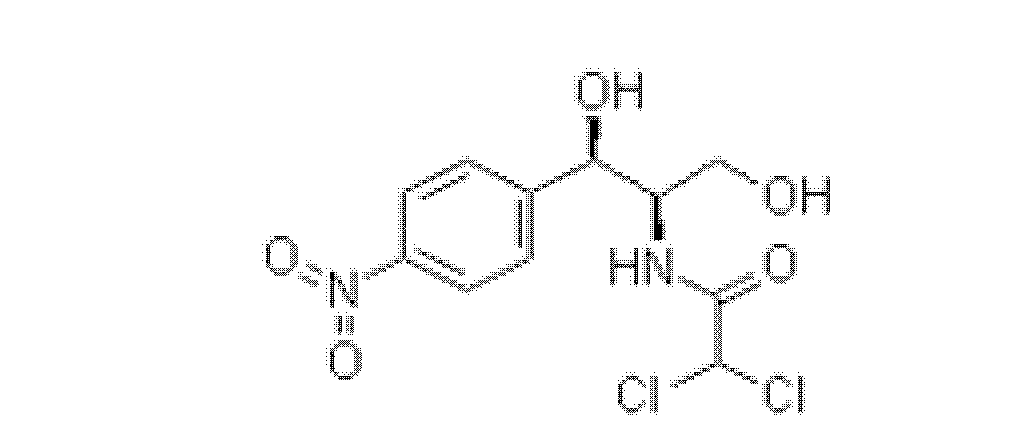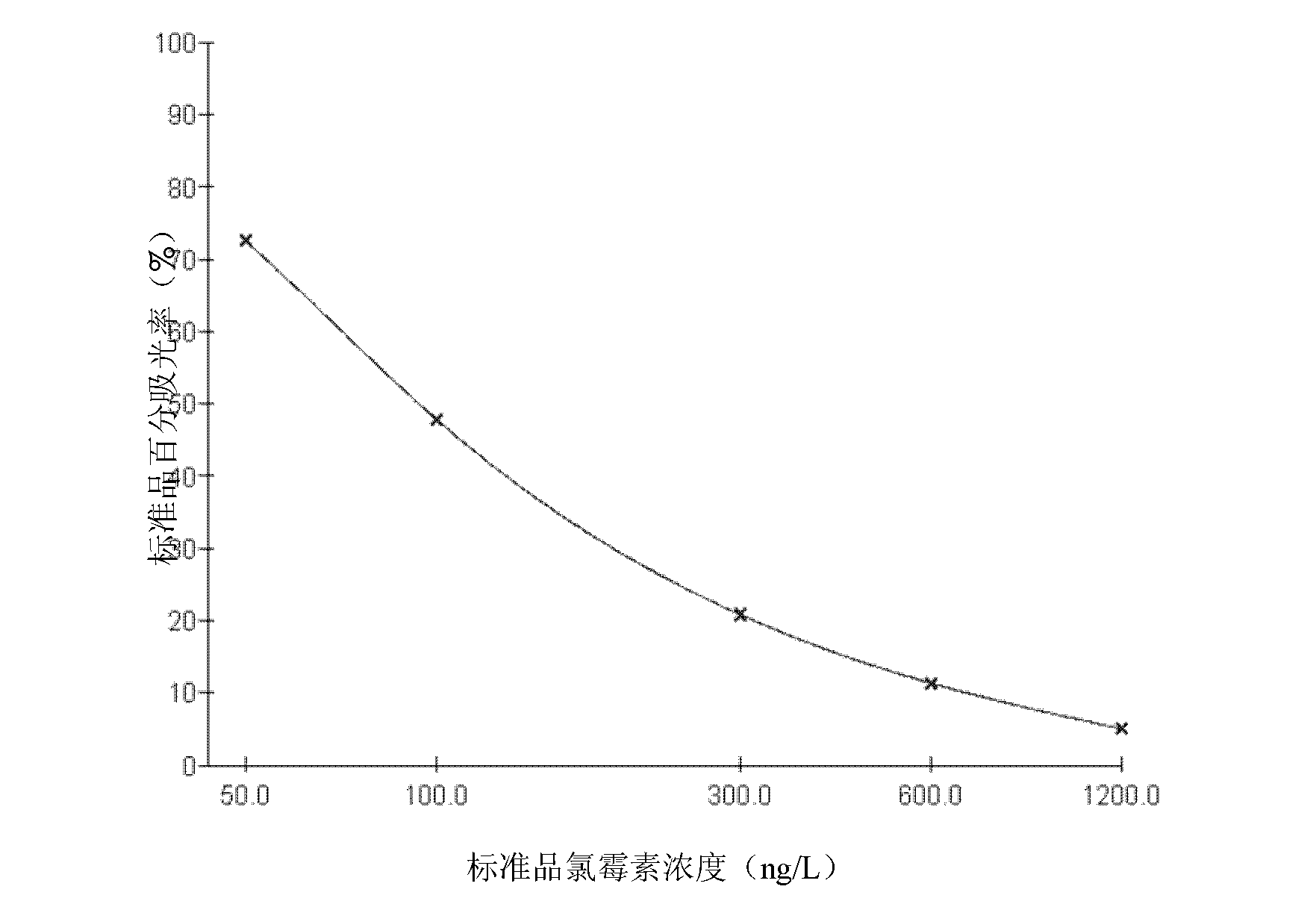Enzyme-linked immunoassay kit for chloramphenicol detection, and applications thereof
An enzyme-linked immunosorbent reagent, chloramphenicol technology, applied in the preparation of test samples, measuring devices, instruments, etc., can solve the problems of slow analysis speed, high degree of instrumentation, and failure to meet the detection limit requirements of detection methods
- Summary
- Abstract
- Description
- Claims
- Application Information
AI Technical Summary
Problems solved by technology
Method used
Image
Examples
Embodiment 1
[0071] The preparation of embodiment 1 kit components
[0072] 1. Antigen Synthesis
[0073] a. Chloramphenicol hapten synthesis
[0074] Dissolve chloramphenicol in methanol, add 5% palladium carbon catalyst (Pd / C), feed hydrogen, keep a certain pressure, react at room temperature for 2 hours, remove Pd / C by filtration, evaporate the solvent to obtain a light yellow viscous liquid, namely is a chloramphenicol hapten; wherein the molar ratio of Pd / C to chloramphenicol is 1:10.
[0075] b. Immunogen synthesis
[0076] The hapten of chloramphenicol was coupled with bovine serum albumin by the glutaraldehyde method to obtain the immunogen.
[0077] Immunogen preparation process:
[0078] Take 30 mg of chloramphenicol hapten and dissolve it with 1.5 ml of water to obtain liquid (I); take 10 μl of 50% glutaraldehyde (GA) and add it to (I), stir and react at room temperature for 18 hours to obtain liquid (II); Dilute 100mg of bovine serum albumin (BSA) with 1.5ml of water and a...
Embodiment 2
[0095] Embodiment 2 detects the formation of the ELISA kit of chloramphenicol
[0096] Set up the ELISA kit for detecting chloramphenicol so that it includes the following components:
[0097] (1) A microtiter plate coated with a chloramphenicol-coupled antigen;
[0098] (2) 6 bottles of chloramphenicol standard solution, the concentrations are 0 μg / L, 0.025 μg / L, 0.075 μg / L, 0.3 μg / L, 1.2 μg / L, 4.8 μg / L;
[0099] (3) 1 bottle of chloramphenicol high-concentration standard solution, the concentration is 100 μg / L;
[0100] (4) working solution of chloramphenicol monoclonal antibody labeled with horseradish peroxidase;
[0101] (5) Substrate chromogenic solution is made up of A liquid and B liquid, and A liquid is carbamide peroxide, and B liquid is tetramethylbenzidine;
[0102] (6) The stop solution is 2mol / L sulfuric acid;
[0103] (7) The concentrated washing solution has a pH value of 7.1 to 7.5, contains 0.8% to 1.2% Tween-20, 0.01‰ to 0.03‰ thimerosal preservative, an...
Embodiment 3
[0105] The detection of chloramphenicol in embodiment 3 samples
[0106] 1. Sample pretreatment
[0107] (1) Tissue (chicken / liver, pork / liver, shrimp, fish, etc.) pretreatment method
[0108] After homogenizing the tissue sample with a homogenizer, weigh 3.0±0.05g of the homogenate into a 50ml polystyrene centrifuge tube, add 6ml of ethyl acetate, shake with an oscillator for 5min, 4000rpm, room temperature (20-25℃ / 68 -77°F) for 5min; pipette 4ml of the upper organic phase (equivalent to about 2g of sample) into a 10ml clean glass test tube, and dry it in a water bath at 50-60°C under nitrogen flow; add 1ml of n-hexane and vortex with a vortex After stirring for 1 min, add 1 ml of reconstituted working solution, vortex for 15 s at 4000 rpm, and centrifuge at room temperature (20-25°C / 68-77°F) for 5 min; remove the upper organic phase, and take 50 μl of the lower layer for analysis.
[0109] (2) Pretreatment method of cooked food
[0110] After homogenizing the sample with ...
PUM
| Property | Measurement | Unit |
|---|---|---|
| Sensitivity | aaaaa | aaaaa |
Abstract
Description
Claims
Application Information
 Login to View More
Login to View More - R&D
- Intellectual Property
- Life Sciences
- Materials
- Tech Scout
- Unparalleled Data Quality
- Higher Quality Content
- 60% Fewer Hallucinations
Browse by: Latest US Patents, China's latest patents, Technical Efficacy Thesaurus, Application Domain, Technology Topic, Popular Technical Reports.
© 2025 PatSnap. All rights reserved.Legal|Privacy policy|Modern Slavery Act Transparency Statement|Sitemap|About US| Contact US: help@patsnap.com



